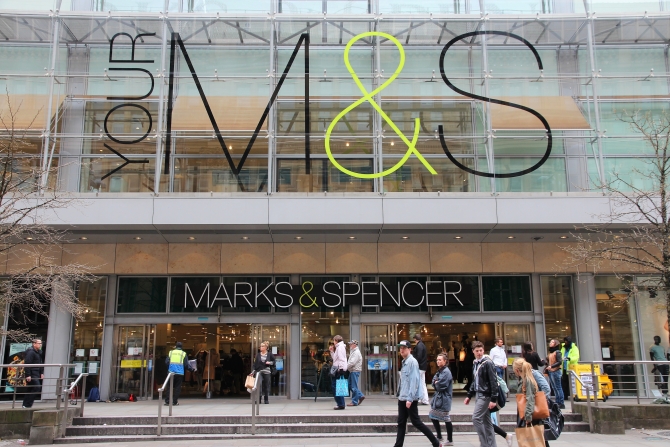Marks & Spencer (M&S) has continued its poor trading form, confirming its 13th consecutive quarterly sales drop for the second quarter of 2014.

The problem still appears to be with the M&S clothing line, which was the primary contributor to a like for like general merchandise sales drop of 4 per cent. As a result, half year pre-tax profits fell by 0.4 per cent to £279.4 million, although underlying profits resoundingly beat analysts’ expectations by rising 2.3 per cent to £267.6 million.
Beating analysts’ expectations, in fact, seemed to be something of a theme in the latest trading update, as although the results largely documented losses, these were much lower than many believed possible given the retailer’s recent poor run.
BBC business correspondent Kamal Ahmed says; “The City is likely to welcome Marks & Spencer’s results – gross margins are up, cash generation is up and dividends are up.
“But the overall story is one familiar to all those who have been watching Marks & Spencer for any length of time: food doing well but overall general merchandising, including vital clothing, down.”
Indeed, the one area in which M&S is continuing to excel is food, with like for like sales rising 0.2 per cent in the second quarter. Admittedly, this is much weaker than the first quarter’s performance, but was in line with analysts’ forecasts and a much stronger performance than seen in popular grocery chains such as Tesco, Sainsbury’s and Asda.
Like many retailers of late, M&S has blamed its lacklustre sales on the Indian summer, claiming that customers cooled towards new autumn and winter lines as the weather remained warm outside.
However, director Phil Dorrell of retail consultancy Retail Remedy believes this excuse does not go far enough in explaining why total sales of women’s clothing have risen by just 1.3 per cent in the first five months of the financial year.
He says; “No amount of hand wringing about September’s unseasonal weather can explain away such weak clothing sales.
“The brand is finally introducing more clarity to its over-complex clothing lines, but look beyond the flagship stores and many are still a mess of baffling sub-brands, and feel like museums where older people go to browse endless rows of black slacks.”
Chief executive Marc Bolland claimed that he was “pleased” with the results given the “challenging market conditions”, but releasing report after report of minimal, if any, gains must be beginning to concern the board of M&S by now.
With store re-fits and new openings occurring all over the country, and seemingly endless revamps of the clothing line, the question now is what else M&S can do to recapture the interest of consumers.